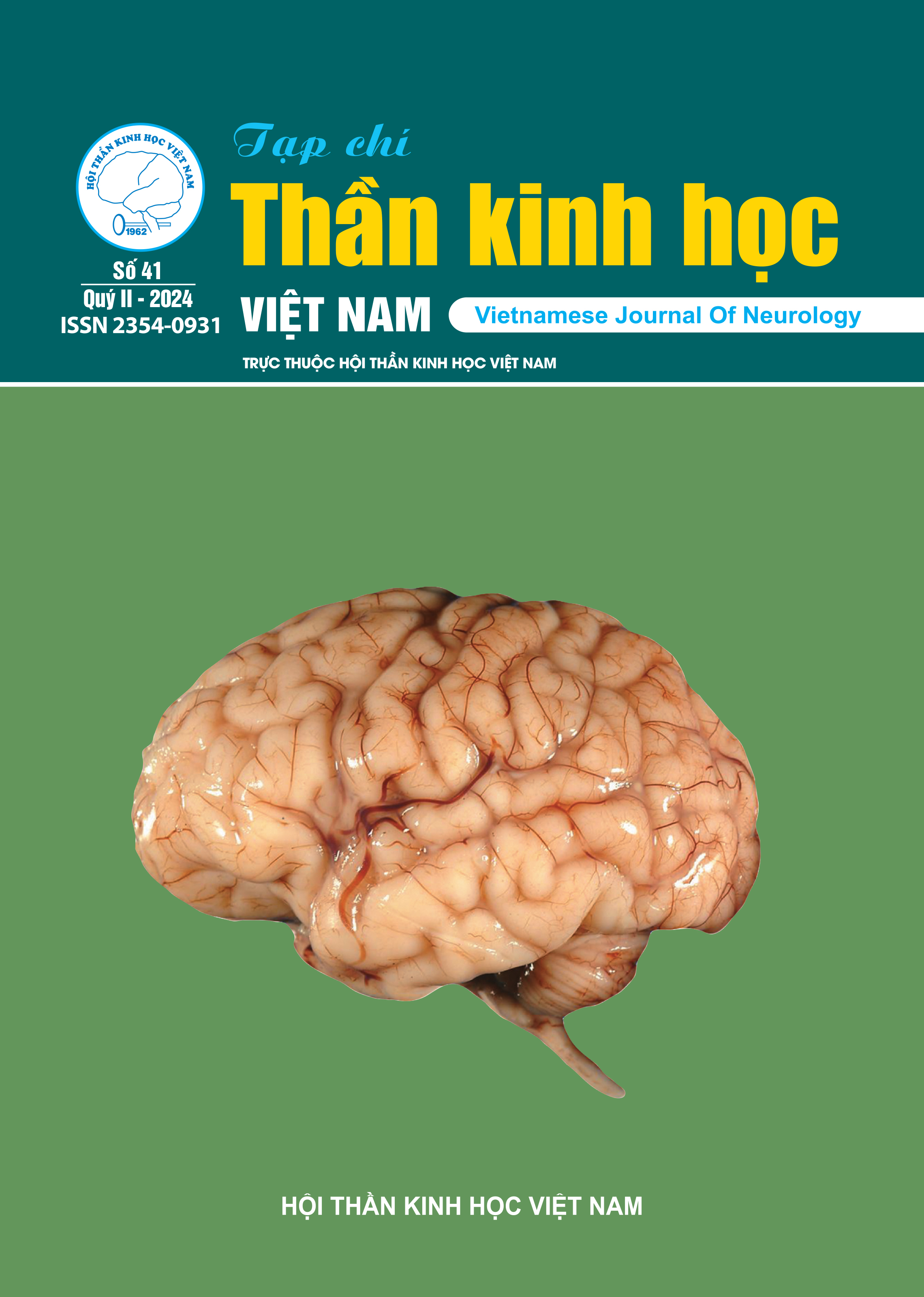Tình trạng táo bón và các yếu tố liên quan ở người bệnh tại Phòng Hồi sức tích cực, Khoa Nội – Hồi sức Thần kinh, Bệnh viện Hữu Nghị Việt Đức năm 2023

DOI:
https://doi.org/10.62511/vjn.41.2024.015Từ khóa:
táo bón yếu tố liên quan người bệnh ICULượt tải xuống
Đã xuất bản
Số tạp chí
Chuyên mục
Thể loại
Cách trích dẫn
Tóm tắt
Mục tiêu: Đánh giá tình trạng táo bón và các yếu tố liên quan ở người bệnh tại phòng Hồi sức tích cực, Khoa Nội – Hồi sức Thần kinh, Bệnh viện Hữu Nghị Việt Đức.
Phương pháp: Nghiên cứu thuần tập tiến cứu được thực hiện trên 104 người bệnh ICU. Tình trạng táo bón của người bệnh được xác định mốc thời gian 3 ngày liên tiếp không đi đại tiện kể từ khi nhập ICU.
Kết quả: Tỉ lệ táo bón của người bệnh ICU là 92,3%. Các yếu tố huyết áp, tình trạng bất động, điểm Glasgow và sử dụng Midazolam có liên quan có ý nghĩa thống kê với sự xuất hiện của táo bón (p < 0,05) trong đó huyết áp của người bệnh và tình trạng bất động dự đoán có ý nghĩa thống kê với tình trạng táo bón của người bệnh (p < 0,05).
Kết luận: Tỉ lệ táo bón của người bệnh ICU trong nghiên cứu của chúng tôi khá cao. Táo bón là một trong những vấn đề ảnh hưởng rất lớn đến tình trạng người bệnh. Các biện pháp can thiệp sớm tập trung vào các yếu tố nguy cơ như huyết áp và tình trạng bất động sẽ giúp làm giảm tình trạng táo bón ở người bệnh.
Tài liệu tham khảo
Scott, S.M., et al., Chronic constipation in adults: Contemporary perspectives and clinical challenges. 1: Epidemiology, diagnosis, clinical associations, pathophysiology and investigation. 2021. 33(6): p. e14050.
DOI: https://doi.org/10.1111/nmo.14050

Guerra, T.L., S.S. Mendonça, and N.G. Marshall, Incidence of constipation in an intensive care unit. Rev Bras Ter Intensiva, 2013. 25(2): p. 87-92.
DOI: https://doi.org/10.5935/0103-507X.20130018

van der Spoel, J.I., et al., Influence of severity of illness, medication and selective decontamination on defecation. Intensive Care Med, 2006. 32(6): p. 875-80.
DOI: https://doi.org/10.1007/s00134-006-0175-9

Nassar, A.P., Jr., F.M. da Silva, and R. de Cleva, Constipation in intensive care unit: incidence and risk factors. J Crit Care, 2009. 24(4): p. 630 e9-12.
DOI: https://doi.org/10.1016/j.jcrc.2009.03.007

Azevedo, R.P., et al., Intestinal constipation in intensive care units. Rev Bras Ter Intensiva, 2009. 21(3): p. 324-31.
DOI: https://doi.org/10.1590/S0103-507X2009000300014

McPeake, J., H. Gilmour, and G. MacIntosh, The implementation of a bowel management protocol in an adult intensive care unit. Nurs Crit Care, 2011. 16(5): p. 235-42.
DOI: https://doi.org/10.1111/j.1478-5153.2011.00451.x

Patanwala, A.E., et al., Pharmacologic management of constipation in the critically ill patient. Pharmacotherapy, 2006. 26(7): p. 896-902.
DOI: https://doi.org/10.1592/phco.26.7.896

Gacouin, A., et al., Constipation in long-term ventilated patients: associated factors and impact on intensive care unit outcomes. Crit Care Med, 2010. 38(10): p. 1933-8.
DOI: https://doi.org/10.1097/CCM.0b013e3181eb9236

Werth, B.L., et al., Defining constipation to estimate its prevalence in the community: results from a national survey. 2019. 19: p. 1-7.
DOI: https://doi.org/10.1186/s12876-019-0994-0

Spodniewska, E. and A. Guha, Constipation in critically ill patients and its relationship to feeding and weaning from respiratory support. Critical Care, 2013. 17(2): p. P241.
DOI: https://doi.org/10.1186/cc12179

Masri, Y., J. Abubaker, and R. Ahmed, Prophylactic use of laxative for constipation in critically ill patients. Ann Thorac Med, 2010. 5(4): p. 228-31.
DOI: https://doi.org/10.4103/1817-1737.69113

Nassar, A.P., F.M.Q. da Silva, and R. de Cleva, Constipation in intensive care unit: Incidence and risk factors. Journal of Critical Care, 2009. 24(4): p. 630.e9-630.e12.
DOI: https://doi.org/10.1016/j.jcrc.2009.03.007

Y. Launey, et al., Factors associated with time to defecate and outcomes in critically ill patients: a prospective, multicentre, observational study. Anaesthesia, 2020. 76.
DOI: https://doi.org/10.1111/anae.15178

McClave, S.A., et al., Guidelines for the Provision and Assessment of Nutrition Support Therapy in the Adult Critically Ill Patient: Society of Critical Care Medicine (SCCM) and American Society for Parenteral and Enteral Nutrition (A.S.P.E.N.). JPEN J Parenter Enteral Nutr, 2009. 33(3): p. 277-316.
DOI: https://doi.org/10.1177/0148607109335234

Morad, M., et al., Prevalence and risk factors of constipation in adults with intellectual disability in residential care centers in Israel. Res Dev Disabil, 2007. 28(6): p. 580-6.
DOI: https://doi.org/10.1016/j.ridd.2006.08.002

Ueki, T., et al., Case-controlled study on risk factors for the development of constipation in hospitalized patients. Yakugaku Zasshi, 2011. 131(3): p. 469-76.
DOI: https://doi.org/10.1248/yakushi.131.469










